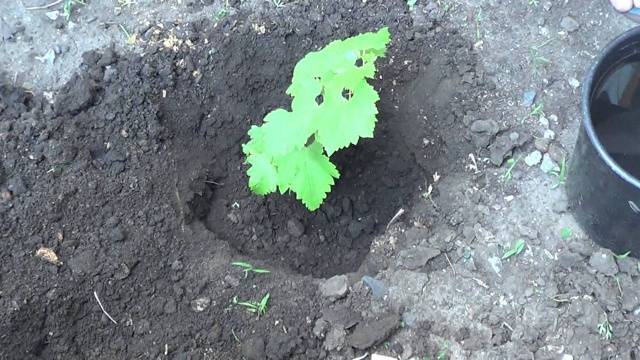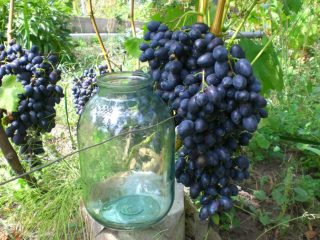Content
Modern hybrids are actively replacing old grape varieties, and there are fewer and fewer of them every year. The Taifi grape is considered one of the most ancient varieties, because the first mention of it dates back to the seventh century. An oriental grape variety, it came to Europe from Arab countries. This crop has two varieties: white and pink grapes. Tyfi Pink has become very popular and widespread, so further discussion will be about this variety. This species has many advantages, and the main ones are the excellent taste of the berries and the attractive appearance of the bunches. Winegrowers from Russia may encounter a number of difficulties when growing Taifi, because this variety is oriental and loves warmth and sun very much.
A detailed description of the Taifi Pink grape variety with photos and reviews is given in this article. Here we will talk about the advantages and disadvantages of Taifi, the rules for its cultivation and the necessary care.
Characteristics of the species
The “journey” of Taifi grapes from Samarkand and Bukhara (its homeland) around the world was long. Not on all continents and not in all countries did this variety take root and be able to exist. For normal development and fruiting, the vine needs a warm and even hot climate, a lot of sun, and a long summer.
The lands of Crimea, Georgia, Tajikistan, Uzbekistan, and Dagestan turned out to be the most suitable for eastern Taifi. There, the grapes received different names, and today the vine of this variety can be bought under names such as Gissori, Tayfi-Surkh, Toipi-Kyzyl.
Taifi Pink grapes are a table species and belong to the group of oriental hybrids and varieties. The description of the variety is as follows:
- plant with vigorous bushes and tall shoots;
- the ripening period of the crop is late - 165-170 days should pass from the moment the buds open in the spring to the technical maturity of the berries;
- young shoots have a dark crimson border, they are lightly colored and have crowns with slight pubescence (this information will be useful for those who want to purchase a seedling of this variety for the first time);
- fully ripened vines and annual shoots are colored red-brown;
- grape shoots ripen well and are distinguished by strong growth;
- the percentage of fruiting shoots reaches 80, ovaries can form even on stepsons;
- the leaves of Taifi Pink are large, five-lobed, their shape is elongated, oval;
- the lower part of the leaf is usually covered with a small fluff, but can be completely smooth;
- Taifi Pink's flowers are bisexual, which greatly facilitates their pollination and has a beneficial effect on grape yields;
- the grape bunch is very large, loose with a large number of lateral blades;
- the average weight of a bunch ranges from 700 to 1500 kg (grape clusters weighing about two kilograms are found);
- The shape of the bunch of Taifi Pink is cylindrical or conical;
- the stem of the grape cluster is long, woody at the base;
- The berries of the oriental variety are very large, their weight is usually 7-9 grams;
- The shape of the berries is oval or cylindrical; the fruit is distinguished from other varieties by a noticeably beveled top;
- the berry can reach three centimeters in length, the standard size is 2.3-2.8 cm;
- at the stage of full ripening, the berries of Pink Taifi have a very bright color: from dark pink to reddish and purple;
- the peel of the berry is covered with a slight waxy coating, with tiny dark dots visible on it;
- the skin on Taifi fruits is dense, thick, its inner side has a rich red tint;
- the flesh is crispy, dense, juicy, meaty;
- Taifi Pink has an excellent taste, very sweet, harmonious (this grape is highly valued by tasters);
- sugar content is 17.2%, acidity is 6.4 g/l, calorie content is 65 kcal per 100 grams (which is much less than most hybrids and grape varieties);
- when ripe, the fruits do not fall off or become overripe (on the contrary, the longer the bunch is on the vine, the tastier the grapes);
- The Taifi grape variety can be stored for a very long time (the bunches will last in the refrigerator until spring);
- the fruits tolerate transportation well and have a high commercial value;
- Taifi Pink grapes are very unpretentious to the composition of the soil; they can be grown on poor and saline soils;
- the variety is not resistant to low temperatures and does not tolerate sudden temperature changes;
- Tyfi Pink's immunity to diseases characteristic of grapes is poor;
- The variety's yield is high - about 20 tons of fruit can be harvested from a hectare of vineyards.
However, it cannot be said that the presence of seeds is a disadvantage of Taifi.This grape is highly valued for its dietary and medicinal properties; it is recommended to eat it with the peel and seeds, since each part of the berry contains its own vitamins and beneficial microelements.
Advantages and disadvantages
Like any cultivated plant, Taifi grapes have their strengths and weaknesses. Connoisseurs of this variety love it for the following qualities:
- excellent taste and high nutritional value;
- excellent presentation (as confirmed by photos of berries and bunches);
- possibility of long-term storage (for several months!) without loss of taste and attractiveness of the crop;
- high productivity;
- the fertility of the vine and its rapid growth;
- Possibility of growing on salty and dry soils.
You can use Taifi grapes in any way you like: they eat them fresh, prepare juices (the juice, by the way, turns out clear) and wines, make various sauces and marinades based on the berries, dry the fruits and get the best raisins in the world.
Ancient Gissori also has its shortcomings, and they are quite serious. Therefore, before purchasing cuttings, a winegrower should think carefully and weigh the pros and cons. The disadvantages of this variety are:
- poor frost resistance;
- deterioration in the taste of berries due to lack of sun;
- intolerance to temperature fluctuations;
- Tyfi's predisposition to diseases such as spider mites, mildew, oidium, and powdery mildew.
Despite all the listed shortcomings, reviews of Tayfi grapes are mostly positive.All the disadvantages of Ghissori are offset by his positive qualities. In addition, experienced winegrowers are usually prepared for the peculiarities of any type.
Rules of agricultural technology
Growing the Taifi Pink variety is, in principle, not difficult - this grape is unpretentious. The only thing a vine needs for normal development is a suitable climate. Considering the low frost resistance of the variety, its love of the sun and long growing season, Taifi grapes are not recommended for growing in temperate climates.
Landing
Cuttings of the Taifi Pink variety are distinguished by strong growth and good survival rate. Usually there are no problems with planting this variety. For grapes, it is recommended to choose a site on the south or southwest side and place the vine near the wall of a house, outbuilding, or permanent fence.
The distance between neighboring bushes should be at least three meters - the large height of the bushes and their spreading nature should be taken into account. Planting holes can be prepared six months before planting or at least a couple of weeks. The depth of the pit should be at least 50 cm, and its diameter should be about 60 cm.
The bottom of the planting pit is lined with drainage material, and a layer of river sand is poured on top. The extracted soil should be mixed with fertilizers. Taifi grapes do not require much fertilizer; a bucket of humus and a liter of wood ash are enough.
After a couple of weeks, the fertilizers will be compacted and you can begin planting. It is recommended to soak the cuttings in water or a growth stimulator for a couple of days. Immediately after planting, it is necessary to install a support near the cuttings, since the vine of this grape is very tall.
Care
Compared to local varieties, eastern Taifi is more capricious and demanding, so you need to care for it a little differently:
- The variety loves water very much (although it tolerates periods of drought normally), so water the vine will have to often. It is most convenient to use special drip-type irrigation systems for watering. If there are no such systems, the grapes are watered at the root. Watering is especially important before the vine blooms and immediately after flowering.
- Feed Taifi Pink is rarely needed. In the fall, you can use organic matter in the form of compost, humus, wood ash, cow manure or bird droppings. During the summer season, the variety responds well to potassium-phosphorus fertilizing, which is carried out after flowering of the vine.
- The soil around the vine needs to be regularly loosen. The work of a winegrower can be greatly facilitated by mulch. Organic mulch simultaneously protects the soil from drying out and fertilizes the soil.
- Trim Taifi Pink can be grown in spring or autumn, when the vine is in a state of “sleep”. Fan pruning is recommended for this variety. You need to cut it into three or four branches according to the principle of medium pruning (leaving 5-6 buds on each shoot). To increase productivity, you can try long pruning with 7-8 buds.Large grapes do not tolerate excessive load well, so rationing plays a significant role in this case.
- Due to Taifi’s predisposition to illness, it will be necessary to carry out preventative treatment vines Bushes should be sprayed before flowering and immediately after flowering ends. These grapes are especially often affected by fungal infections, so the use of insecticides is mandatory.
Review
Conclusion
Taifi Pink grapes are perfect for lovers of Asian varieties, large-fruited and very sweet. This variety does not take root everywhere; it is afraid of the cold, does not like shade and temperature changes. But Ghissori tolerates drought well, can grow on poor soils, and produces very high yields.Mature bunches have a marketable appearance, tolerate transportation well and can be stored for a long time.
Growing oriental grapes is not difficult, you just need to create suitable conditions for it.






















